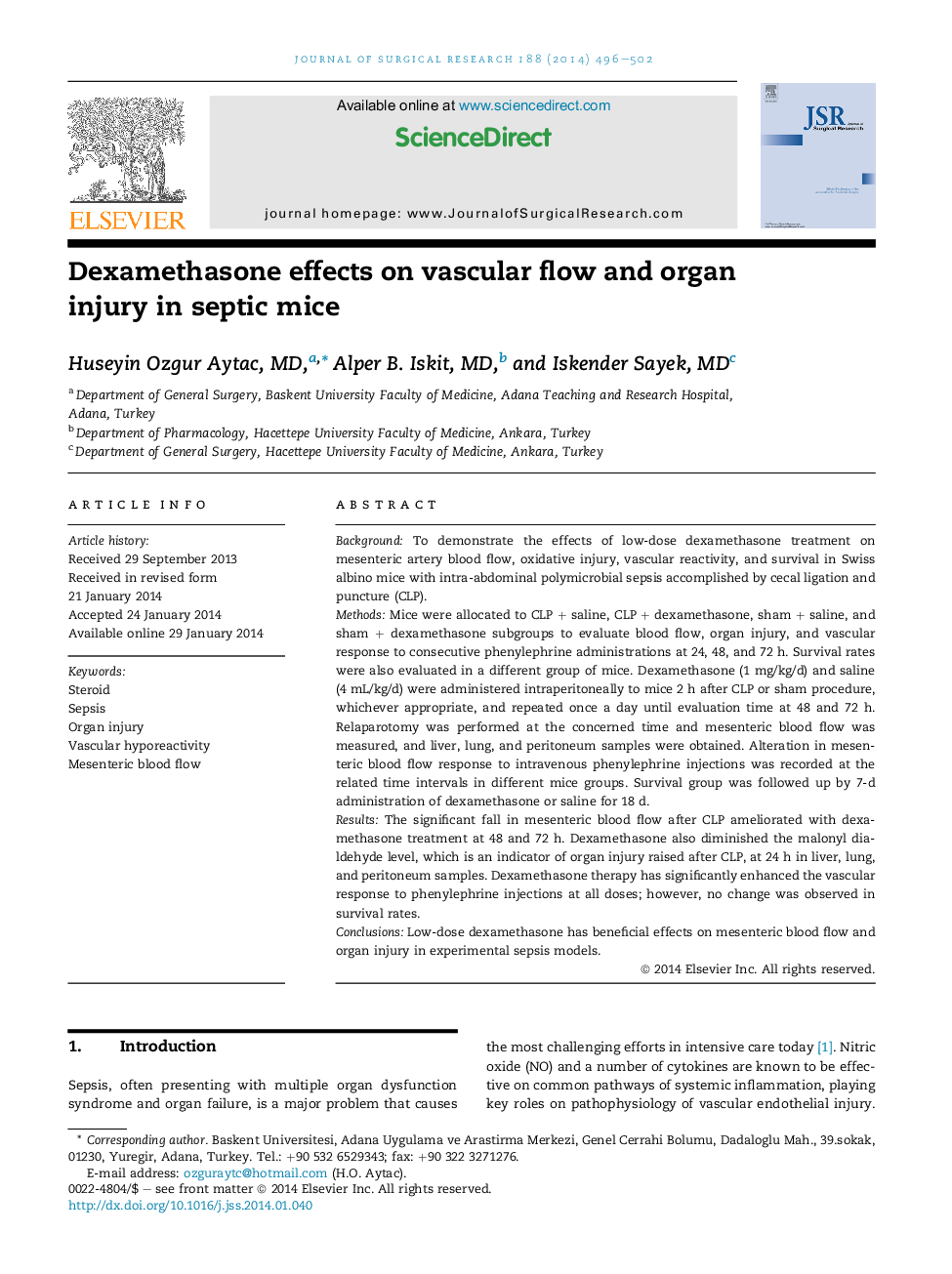| Article ID | Journal | Published Year | Pages | File Type |
|---|---|---|---|---|
| 6254049 | Journal of Surgical Research | 2014 | 7 Pages |
BackgroundTo demonstrate the effects of low-dose dexamethasone treatment on mesenteric artery blood flow, oxidative injury, vascular reactivity, and survival in Swiss albino mice with intra-abdominal polymicrobial sepsis accomplished by cecal ligation and puncture (CLP).MethodsMice were allocated to CLP + saline, CLP + dexamethasone, sham + saline, and sham + dexamethasone subgroups to evaluate blood flow, organ injury, and vascular response to consecutive phenylephrine administrations at 24, 48, and 72 h. Survival rates were also evaluated in a different group of mice. Dexamethasone (1 mg/kg/d) and saline (4 mL/kg/d) were administered intraperitoneally to mice 2 h after CLP or sham procedure, whichever appropriate, and repeated once a day until evaluation time at 48 and 72 h. Relaparotomy was performed at the concerned time and mesenteric blood flow was measured, and liver, lung, and peritoneum samples were obtained. Alteration in mesenteric blood flow response to intravenous phenylephrine injections was recorded at the related time intervals in different mice groups. Survival group was followed up by 7-d administration of dexamethasone or saline for 18 d.ResultsThe significant fall in mesenteric blood flow after CLP ameliorated with dexamethasone treatment at 48 and 72 h. Dexamethasone also diminished the malonyl dialdehyde level, which is an indicator of organ injury raised after CLP, at 24 h in liver, lung, and peritoneum samples. Dexamethasone therapy has significantly enhanced the vascular response to phenylephrine injections at all doses; however, no change was observed in survival rates.ConclusionsLow-dose dexamethasone has beneficial effects on mesenteric blood flow and organ injury in experimental sepsis models.
